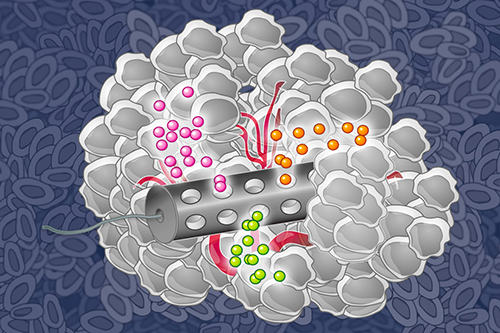Researchers at MIT want to make it easier for doctors to choose which drug will be the most effective when targeting a tumor. They developed an implant that can hold up to 30 different drugs, enabling researchers to measure their effect on cancer cells once the drugs are released.

About the size of a grain of rice, the implant will allow doctors to test patients for several drugs and select the most appropriate one. This approach contrasts current methods that assess drug treatment by extracting tumor cells and growing them in a lab. When cells are removed from the body, they can respond differently to drugs than when in their native environment.
“This device could help us identify the best chemotherapy agents and combinations for every tumor prior to starting systemic administration of chemotherapy, as opposed to making choices based on population-based statistics,” states Jose Baselga, chief medical officer at Memorial Sloan Kettering Cancer Center and an author of a paper about the device, in an MIT release. “This has been a longstanding pursuit of the oncology community and an important step toward our goal of developing precision-based cancer therapy.”
The implant is made from a staff, crystalline polymer and is placed inside the body using a biopsy needle. The drugs penetrate 200-300 μm into the tumor and after one day, the device and a tissue sample are removed. The sample is sliced and stained with antibodies that can detect markers that indicate cell death or proliferation. This process allows researchers to assess the effectiveness of each drug.
MIT researchers are investigating how to expedite results by making the implant easier to read while still in the body. They published a paper describing the device in last week’s online edition of Science Translational Medicine. Senior paper authors include Robert Langer, David H. Koch Professor at MIT and Michael Cima, the David H. Koch Professor of Engineering at MIT.




